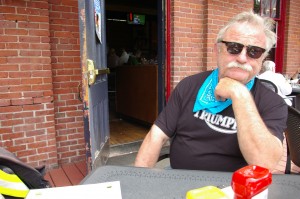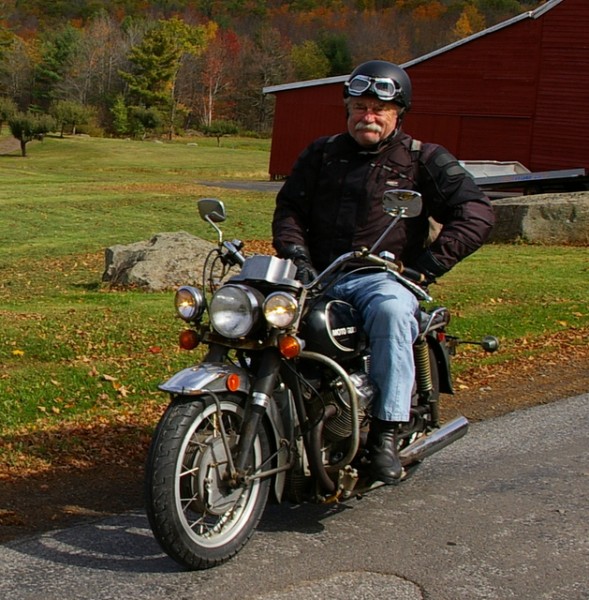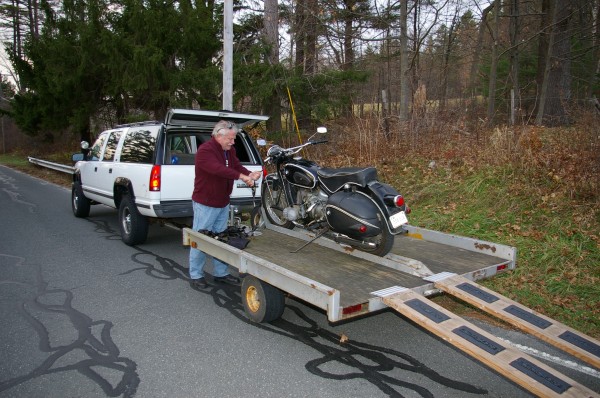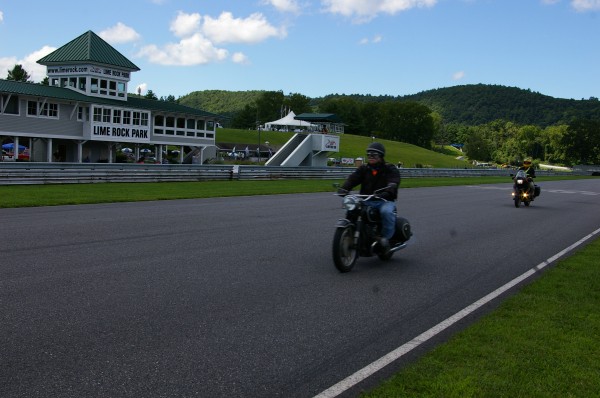Sipping my Sunday morning coffee a few moments ago while sitting at my laptop, I made a routine visit to the state’s Judicial Branch website to see if there was any  change in the status of the case related to my riding mate and friend Gary Randall, who died from head injuries sustained in an August 2013 crash when an unobservant driver pulled into his path as we rode to dinner on Route 202 in Litchfield.
change in the status of the case related to my riding mate and friend Gary Randall, who died from head injuries sustained in an August 2013 crash when an unobservant driver pulled into his path as we rode to dinner on Route 202 in Litchfield.
To my initial confusion, Kenneth Nolan’s name was no longer listed among the pending cases under the heading of “Criminal/Motor Vehicle.” Further checking revealed that his case had shifted to the “Convictions” category. Nolan had changed his plea on Jan. 7 to “guilty” on a charge of negligent homicide involving a motor vehicle, and had been sentenced to six months in jail and given 18 months of probation.
The jail time was suspended and no fine was imposed, either. No mention was made whether his driver’s license was suspended.
Is this justice? My immediate reaction is I don’t know.
As a rider, I wonder if there shouldn’t be some more tangible consequences for an action that resulted in a motorcyclist’s death.
Gary and I had been riding in a staggered formation, eastbound headed to The Village restaurant for dinner on that sunny Monday evening, when Nolan pulled from the parking lot of a package store and into Gary’s path. Gary was riding his 1968 BMW R50/2 in front and had no time to react. I witnessed him initiate a swerve, run into the left front of Nolan’s car, and get launched like a bean bag into the oncoming lane.
Gary’s half-helmet came off upon impact and he suffered severe head injuries. He was quickly airlifted to Hartford Hospital and died two days later.
As a friend, I can’t help but feel outraged that the punishment wasn’t more severe. Is a man’s life only worth 18 months of probation – a man with a career, a wife and daughter, and a passion for living?
As a reporter, I can assess the case a bit more dispassionately. As I wrote in a column days after the tragedy, Gary had done little in the way of taking measures that could have prevented the accident. The headlight on his BMW wasn’t illuminated. He was dressed in a black riding jacket. Against a backdrop of maple trees, and with the sun setting behind him in the west, he was virtually invisible. And he wasn’t wearing a full-face helmet.
In a quick conversation a few days after the crash, Nolan told me that he saw me approaching – the headlight on my 2008 Suzuki V-Strom was blazing and I was wearing a reflective yellow vest – but that he never saw Gary. So, do the circumstances of road conditions and attire somewhat mitigate the situation? There’s no law that says it’s a rider’s responsibiity to be seen by drivers. It’s up to drivers to see us.
It has been 17 months since Gary’s death. His collection of nine vintage motorcycles has been dispersed and, I’m told, his wife has sold their home. I think of him often and still miss him terribly. I can’t help but believe that he could have prevented his death, and never ride myself without my headlight on high beam, a bright full-face helmet on my head and a reflective vest over my riding jacket.
In the case of Nolan, did the punishment fit the crime? Is this justice? I simply don’t know. I do know that Gary’s absence will always be felt.
 Ride CT & Ride New England Serving New England, NYC and The Hudson Valley!
Ride CT & Ride New England Serving New England, NYC and The Hudson Valley!







I am very sorry for the loss of Gary to has family, you and too are motorcycle family.
I do remember him from Lime Rock & my
reaction to your article about the punishment handed down is as you not nearly stern enough.
That said the journalist in you has brought up some very good points one of which the helmet color which I do not wear. I have the extra bright triangle of lights on my bikes but have not extended the helmet color to the safety aids of my motorcycles while I’m riding that being said should a motorcyclist pay with his life for looking more to the period of his beautifully restored bike I don’t believe so and the punishment does nothing towards incentivizing people to slow down the thought process and take an extra look out for us.